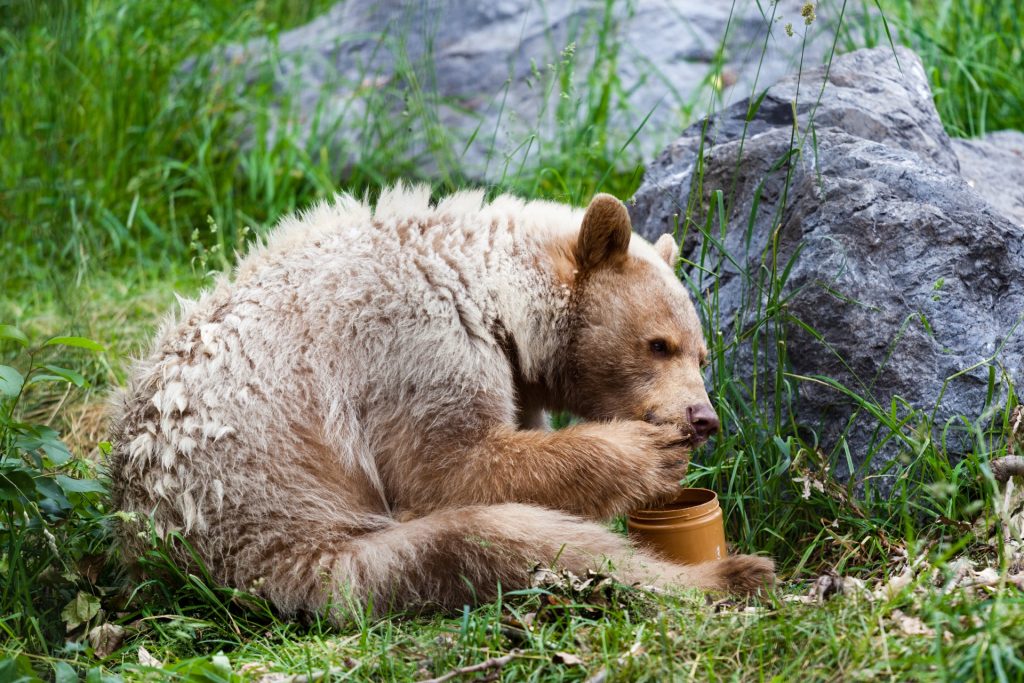The Bears and the Bees

It is safe to say everyone has seen images of Winnie the Pooh with his paw in a jar of honey or on the lookout for a beehive. His insatiable need for honey is what made him so adoring. Well, the reality is that bears in regions where beehives exist do love beehives! The bears are often attracted by the sweet honey scent the bees are busy producing. Bears will seek out hives to fill their bellies. Beehives are not on the menu in regions where the polar bears roam. Polar bears do not even know what honey tastes like! There are a surprising number of nutritional benefits bears get when consuming a hive. Surprisingly, more important than the honey is the protein that bears get from eating the entire hive – bees included!
Bears are advantageous, to say the least. If you travel anywhere in the nation near a forested area, you can safely assume bears live there. Bears like (and need) calories, and people make it much easier to get a free meal. However, bears do not wait for someone to leave their cooler outside the tent at night. Bears are insatiably motivated to fill those bellies! The natural sugars from honey are nutritional and delicious, and so is the free buffet of bees and larvae inside the hive, so of course, bears gravitate to areas where bees live.
Bears will take full advantage of an unattended apiary where the bees are kept.
Now, let’s clarify that the bears nosing around a beehive are a bit clumsy and powerful due to their sheer size and massive claws. So, do not take it personally if a bear gets ahold of your apiary and causes damage. They don’t consider how hard you worked to put the boxes together or what gets damaged in the process. These adorable (from afar) mammals are only naturally doing what all mammals do – get energy through food. Bears are playful as well, so there is often evidence of what appears to be remnants of bears playing with pieces of the apiary boxes at the crime scene. One bee advocate and apiary owner posted pictures that show a bear (or bears) were playing a version of ring toss with pieces of wood.
Bees and Bears Complete the Circle
The relationship between bees and bears is quite delicate and vital in our ecosystem. Protecting the bears allows them to spread seeds that keep the forest healthy, which protects the bees. Bears, forests, and bees are all essential parts of the circle of life. Although a bear looking for an easy meal from a hive might seem like a nuisance if the hive is near your home, they are doing what all living things do – finding ways to survive.
Do Bears Get Stung When Eating a Beehive?
Yes! Although bears may get stung on the ears and face where there is less hair, the rest of their furry bodies are like Iron Man’s suit – impenetrable! It is nearly impossible for a little bee stinger to penetrate the thick coat. Most bears seem to decide that the reward exceeds the temporary discomfort!
It is thought that bears go to the hives to get the bees inside the hive than the sweet honey itself! A bear will eat everything, including the bees inside! Large amounts of protein are gained doing this, and bears require high protein diets. Bears will most likely take a nap after a beehive buffet. Black and brown bears seem to be the most motivated to find hives, even if it means accessing a farm and destroying apiaries and getting a sting or two. So, even though Winnie the Pooh preferred a jar of honey, in reality, a bear would much prefer the entire hive, even with the risks.
Bees Rebuild Their Hives
One lovely thing about the bear’s love for hives is that the hive will be rebuilt if the queen survives. Again, bears can’t distinguish between larvae, worker bees, and the queen. Bears are opportunistic eaters, so usually, an easy meal is just that – easy. Bee farmers in bear regions are wise to add protection to their apiaries, but a motivated bear is unstoppable. Upon getting a whiff of sweet honey, the curious bear will venture out relentlessly following the scent. It does not matter which way the wind is blowing; the smell of sweet honey will draw bears out from the forest as their curiosity, and olfactory senses take over.
So, the famous depiction of Winnie the Pooh and his paw in a honey jar is based on truth. Bears love honey, but they love the nutritional bliss that comes from eating the whole hive, and a sting here and there doesn’t deter these motivated mammals!
